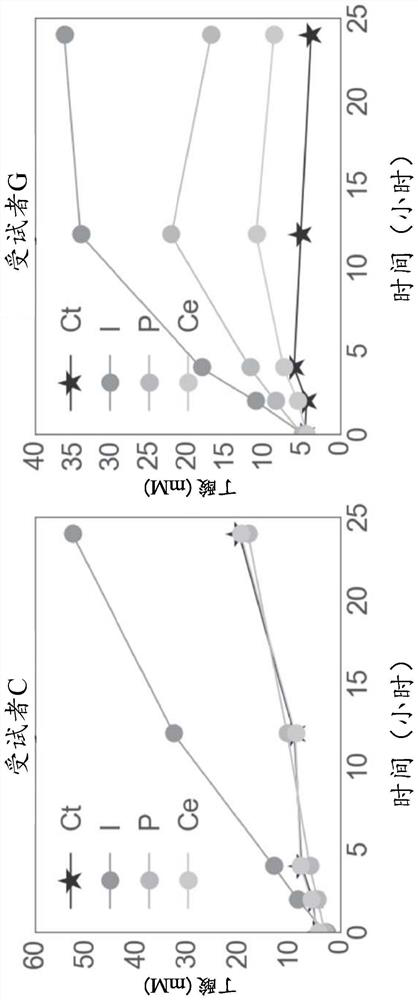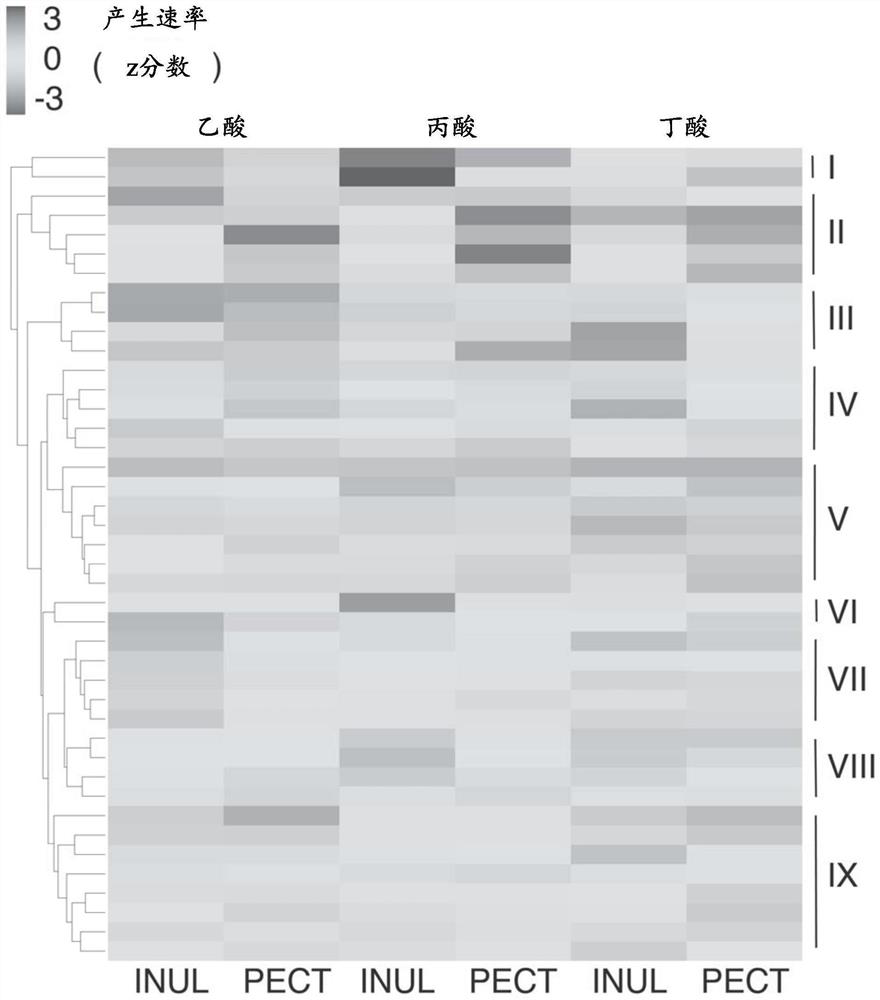Predicting microbiota response to dietary fibers
A technology of dietary fiber and microbiota, applied in computer software products and devices of reaction, to prove functional heterogeneity in the fermentative capacity of healthy human gut microbiota, able to solve problems such as no short-chain fatty acid diagnostic solutions available
- Summary
- Abstract
- Description
- Claims
- Application Information
AI Technical Summary
Problems solved by technology
Method used
Image
Examples
Embodiment 1
[0215] In vitro measurement of SCFA production
[0216] To measure in vitro SCFA production in response to different dietary polysaccharides, feces from 40 healthy human participants were homogenized into slurries under anaerobic conditions and supplemented with inulin, pectin or cellulose (see Methods section). The slurries were then allowed to evolve over time and samples were taken at regular time intervals to quantify the SCFA content at each time point ( figure 1 ). To determine an appropriate sampling frequency, Applicants conducted a pilot experiment in which Applicants analyzed the trajectories of each SCFA concentration over a 24-hour period. Applicants found that only a small fraction of participants appeared to converge to final SCFA concentrations before the 24-hour time point, but all participants exhibited a linear rate of production over the 0 to 4-hour time window ( figure 2 ). These data are in good agreement with inulin concentrations measured from fece...
Embodiment 2
[0219] Predicting microbial metabolic phenotypes from community composition
[0220] Applicants then asked the question whether Applicants could predict participants' MMPs, defined here as the relative abundance of 97% de novoOTUs obtained from 16S rRNA sequencing of feces prior to incubation with different fibers, from community composition alone. Spend. Applicants trained a random forest classifier (RFC) to predict whether the production rate of a given SCFA for a given microbiota in response to a given fiber was high or low, the production rate being high or low, respectively, by ≥ 0 or less than 0. Production rate z-score is defined. Performance varied by SCFA, with the highest accuracy obtained in predicting butyrate production in response to inulin (AUC=0.87) and pectin (AUC=0.79) Figure 4 ).
[0221] Applicants also tested whether straight fecal SCFA content could be predicted by 16S rRNA sequencing and found moderate predictive power for acetate and butyrate (AUC...
Embodiment 3
[0223] Stability of individual MMPs over time
[0224] While it is known that an individual's gut microbiota can be relatively stable over time without large perturbations, it is unclear whether an individual's MMPs would be equally stable over time. Therefore, applicants repeated the experiment with eight participants at time points spaced at least 6 months apart ( Image 6 a). Although some variability between time points was observed, the extreme values of the MMP for each individual were generally conserved ( Image 6 b). Fisher's test on a contingency table derived from pairwise comparisons of each SCFA:fiber pair for all individuals at both time points indicated that this stability was statistically significant (p=0.003; two-sided Fisher's test ). These results are consistent with the fact that MMPs correlate with the relative abundance of specific members of the microbiota: individuals with higher relative abundances of the above-mentioned Prevotella OTUs may The...
PUM
| Property | Measurement | Unit |
|---|---|---|
| diameter | aaaaa | aaaaa |
| length | aaaaa | aaaaa |
Abstract
Description
Claims
Application Information
 Login to View More
Login to View More - R&D Engineer
- R&D Manager
- IP Professional
- Industry Leading Data Capabilities
- Powerful AI technology
- Patent DNA Extraction
Browse by: Latest US Patents, China's latest patents, Technical Efficacy Thesaurus, Application Domain, Technology Topic, Popular Technical Reports.
© 2024 PatSnap. All rights reserved.Legal|Privacy policy|Modern Slavery Act Transparency Statement|Sitemap|About US| Contact US: help@patsnap.com










